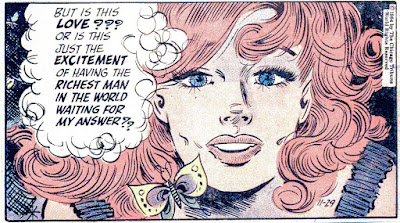 |
| Kent Place, 225 Kent Street Ottawa |
Kent Place was built in 1938 and went rental in September of that year. At that time it was called The Courtland Arms*, and would be known as such until well into the '80s. I don't know why the name changed but I do know that someone didn't center those letters properly. The building comprises some sixteen units at the time of writing.
The Courtland is a decent example of an Ottawa pre-WWII** walk-up, though not as elegant or forward-looking as some — neither a lion couchant like Elgin Street's Kenniston of thirty years previous, nor a deco darling like its late '30s contemporary, the Park Square (again on Elgin). The main entrances quoining certainly yearns more for the past looking to than the future, while the main entrance's cornice-and-brackets are so flattened one can't be sure which one is holding the other in place — if nothing else, they provide an excuse to stop quoining two-thirds of the way up. Had the Courtland been built a decade or three previous, window lintels would have been de rigueur. Here, they're replace by soldier-coursed bricks running the length of the facade.
Another telling touch is the high-waisted "sandstone" foundation — like the door treatment, more reference than substance. The prestigious yellow masonry apron lavished upon the building is actually a veneer, applied to a concrete base of coarse aggregate. The veneer (itself concrete, I suspect) is artfully incised with lines suggesting individual stone blocks where there are none.
 |
| Vestigial bracket — the road to hell is paved with ornaments. |
 |
| Beneath this thin veneer, a foundation of coarser aspect... |
We know that the Courtland Apartments were put up for rent in 1938 thanks to a full-page ad published in The Journal on Saturday, September 17 of that year. This announcement not only introduced us to the Courtland, but relaunched the career of a smaller, adjoining apartment building, Nepean Court, just around the corner at 255 Nepean Street. Here is an architect's drawing of both buildings that was featured on the page...
That's the Courtland left-and-center, with the older, refurbished Nepean Court on the right. I've drawn a couple of lines on the drawing for the amusement of photographers who always try to work with the "rule of thirds" and who avoid bisecting their frame (viz the green line) at all cost. The red line reveals the sweet spot between a looming building and a vertiginous viewpoint. Analyse and discuss...
Robert Smythe has discussed these buildings as greater length here. The Courtland wasn't the first building on this site. Goad (1888, sheet 38) shows us the wooden six-row that preceded both it and Nepean Court.
 |
| Note 221-231 Kent, lower left of block 244 |
Unlike the Courtland, Nepean Court was a reno of an older building — see a construction photo via Smythe here. His killer find seems to show some last minute exterior work at #255.
Check out this picture from a few days ago...
Goad (1912) indicates that the projecting front entrance and balconies were not original to the building. Here, decorative brick courses have been carried forward onto the addition (presumably 1938) while the old limestone masonry (on the left) has been replicated with troweled cement. The cornice and brackets over the door certainly look like they came from the same "Cornices 'n' Brackets 'r' Us" as the ones on the Courtland, just around the corner.
* Re: "Arms", The Word Detective wrote (in part), in July of 2010...
Back when England was awash with Dukes, Earls and similar nobility, many happy centuries before motel and restaurant chains, the local inn or pub (or, indeed, the whole town) frequently sat on land owned by the Duke of Earl, or whomever. This was also a time when many people were illiterate. So pubs and inns relied on highly recognizable graphic signs, perhaps calling themselves “The Blue Swan,” signified for non-readers by a blue swan on the sign. In many cases, the most recognizable symbol in town was the coat of arms of the local nobility, so if one paid rent to the Duke of Norfolk, it made sense to feature the Norfolk family coat of arms on your sign and to call your establishment “the Norfolk Arms.”You can read his entire post here.
We were saddened to learn that as of February 2017, Evan Morris, "The Word Detective" was living in poverty, suffering from MS and battling stage 4 cancer. We have not heard of or from him since and fear the worst. He brought joy to many of us.
On a lighter note, my favourite play on "arms" usage dates back to the mid-20th, when Dale Messick's comic-strip protagonist, Brenda Starr, took up residence at the Lovely Arms Apartments.
** And again on a darker note, British PM Neville Chamberlain and Adolf Hitler were already contemplating war. Via the Ottawa Journal...
"LONDON, Sept. 1 1939 — Secret diplomatic exchanges between Fuehrer Hitler and Prime Minister Chamberlain were published by Great Britain tonight in a White Paper which disclosed an agreement on one ominous point — that if war should come it would be long and bloodier than the Great War..."


